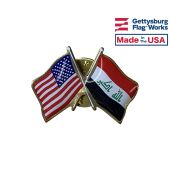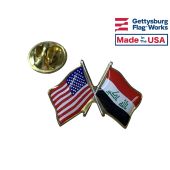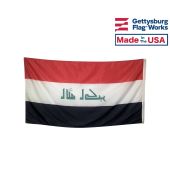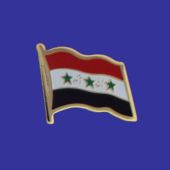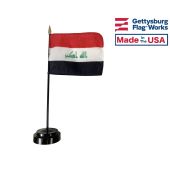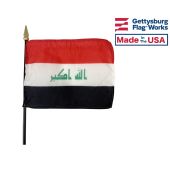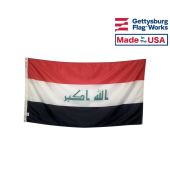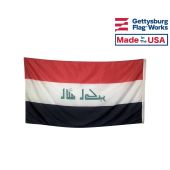Flag of Iraq
Flag of Iraq
Many Iraq flags have represented the nation since it became independent from the Ottoman Empire in the aftermath of the first world war. All of the flags show the influence of the country's neighbors and its Arab heritage mingled with native influences. The history of the flag of Iraq is also the history of the nation, since changes to the flag tended to correspond to the political changes in Iraq and the rest of the Middle East.
- Capital of Iraq: Baghdad
- Area of Iraq: 432,162 sq km
- Languages used in Iraq: Arabic, Kurdish, Assyrian, Armenian
- Religions in Iraq: Muslim, Christian
Colors and Symbolism of Iraq Flags
Iraq flags feature three equal stripes of red, white, and black with the takbir rendered in green in the center. Those colors come from the flag of the Arab Liberation movement, and each one of them represents a different era in the shared history of the Arab people. The black section comes from Muhammad's banner and the Rashidun Caliphate, while the white section represents the later Ummayad Caliphate. The green comes from the Fatimid Caliphate, and is also commonly used as a symbol of Islam. The red stripe comes from the flag of the Khawarji movement. When the colors are taken together, they become a potent symbol of Arab history and pride.
History of Iraq Flags
The first of the Iraq flags was adopted in 1921, and it was derived from the flag of the Arab Revolt that fought against the Ottoman Empire during the first world war. It was similar to the flag of Jordan, which shared a royal dynasty with Iraq at the time. The flag was replaced in 1958 when Iraq joined with Jordan to create the Arab Federation, but the union did not last long. Abdul Karim Qassim led a revolution to overthrow the monarchy in 1959, and he replaced the nation's flag with one that lacked monarchist symbols when his revolution succeeded. The new flag included symbols that were meant to represent the nation's minorities, including the Christians and the Kurdish people.
Qassim's government was overthrown in 1963, and the replacement instituted a flag that bears a clear resemblance to the modern flag. It was inspired by the flag of the Arab Liberation movement, so it resembled many other Arab flags from the time. The flag changed once again in 1991 to include the Takbir, and it changed again in 2004 in response to the end of Saddam Hussein's government. Iraq adopted its modern flag in 2008, which it has retained to this day.
